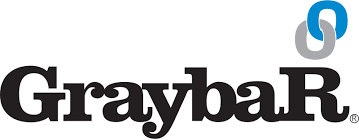2018 Q3 Electrical Chain Performance – Graybar, Rexel and WESCO
 Continuing our 2018 Q3 earnings report coverage, last week we covered a number of industrial distributors to get a sense of the industrial market as well as highlight competitors to electrical distributors and potential electrical sales leakage sources. Now let’s look at how national electrical distributors Graybar, Rexel and WESCO performed in Q3 and what, if any, insights can be gathered.
Continuing our 2018 Q3 earnings report coverage, last week we covered a number of industrial distributors to get a sense of the industrial market as well as highlight competitors to electrical distributors and potential electrical sales leakage sources. Now let’s look at how national electrical distributors Graybar, Rexel and WESCO performed in Q3 and what, if any, insights can be gathered.
Graybar
While Graybar is not a publicly held company, they do issue a press release to share some insights and file a 10Q report each quarter with the SEC.
- Net sales record of $1.9 billion, up 10% vs LY
- Up 8% overall YTD
- Net sales for their Construction segment is up 13% (significantly outpacing the market albeit no sense of where geographically. Of note, Graybar has historically been strong in the datacom / data center market which is a major growth segment nationally and for which Graybar could be a beneficiary. From this data, Graybar is taking share in the large contractor market … which is a segment that WESCO likes to tout as its strength … we’ll see when we look at their numbers.)
- Net sales for CIG (commercial, institutions and government) is up 10%
- Net sales for industrial and utility is up 1.8%
- SG&A is 14.8% of net sales for the 3 months, down from 15% vs 2017’s same period.
- Net income a record $54M
- Gross margin dollars increased 9.8%
- Gross margin rate was 18.9% for the quarter as well as YTD
- (This is an interesting topic for independent distributors. While 18.9% appears to be low it starts generating the questions of “stock vs project mix” (and Graybar doesn’t run many counters so that is a low percent of sales with no significant margin benefit) and utility business is historically low margin business. Could Graybar’s size, and hence the GP $ generated from larger accounts, allow it to operate at a lower GM% to capture project business? Is it focused on $ / employee and hence project business to keep operating expenses low?)
- Net income of 2.9% (but remember, Graybar has expensive pension obligations which could impact this number and how others benchmark against it.)
- Business mix
- Construction is 60.4%, up from 58.8% in 2017 (same time period)
- Industrial & Utility is 20.3%, down from 21.9% in 2017
- CIG (Commercial, Institutional, Government) is 19.3%, consistent with 2017
- Average gross margin of 18.9% across the business
- In its 10Q Graybar explicitly says “we neither manufacture nor contract to manufacture any products we sell.” (So, theoretically, no direct sourcing from China and hence the only tariff issues are those generated from price increased from manufacturers, which they can pass on to customers.)
- “Service revenue represented less than 1% of gross sales for the three and nine months ended September 30th, 2018.” (So, for all of the industry talk about striving to charge for services and the need to generate ‘service’ revenue to compete with Amazon Business, one of the largest electrical distributors is either challenged with achieving this or has chosen not to focus in this area. Perhaps the issue is too difficult? If Graybar can’t effectively define and sell services to primarily contractors, is it realistic for others to generate significant service revenue from this audience? Does the service for revenue mantra need to change to getting customers to value service … and salespeople to understanding how to communicate the value … and find alternative revenue generation models?)
Graybar appears to be performing well in the Construction and CIG segments and is either “in the right niche markets” or could be taking share in the large customer segment.
Rexel
From Rexel’s Q3 earnings slides, with a focus on North America / US:
- Sales growth for “8th consecutive quarter”
- Admitted underperformance in US for “years” … now sustainable growth
- 38% of business is in North America and the region had 7.3% growth in Q3
- Europe barely had any growth and APAC was only 3%
- European digital penetration rate is 23.5%, however, that “success” hasn’t translated to US (Perhaps part of issue is difference in customer type? Perhaps tools and a variety of e-offerings? Perhaps sales organization support? Also, they are the only electrical distribution chain mentioning eBusiness.)
- 79% of North American sales are in the US. US sales were $907.8 million euros
- US sales up 8% to $1.234 million euros for the quarter
- Emphasized its growth regions are Gulf Central (probably due to oil, gas and Hurricane Harvey rebuilding), North West (the Platt business) and Florida
- Company highlights almost 7000 new customers in the last 12 months (but doesn’t define “new customer”. While technically someone opening an account and ordering something for $1 is a “new customer”, this is not a new profitable customer. Given that Rexel, in many locations, is contractor-oriented, a “new” customers should be someone who is on-track to purchase a minimum of $24,000 annually … (we recommend defining a new customer as $25,000 annually and a minimum of 10 invoices so that there is repeat purchasing.) Hopefully, for Rexel’s sake, it has processes in place to ensure retention as well as repetitive purchasing behaviors via utilization of marketing tools … and if you’d like to learn more, give us a call.)
- Canada up 4.8% (Canada sales were $247.2 million euros
- Average North America gross margin percent is 22.9%
- Overall region EBITDA is 4.1%
- US sales up 8% to $1.234 million euros for the quarter
- New branch openings contributed 1.8% to sales in Q3 (while Rexel touts this, the reality is “it’s small dollars”. It’s also interesting that they mention 44 new branches / counters since 2017 with a projected 50 by EOY … 6 more openings. For a company that wants more digital, it’s building more brick and mortar and focusing more on the small / medium contractor market.)
- Project business somewhat “challenged” due to lower wind / power project business (which reinforces that Rexel may not be much of a project player for traditional distribution equipment, lighting and perhaps commodity products in many US geographic areas which accounts for their high gross margin percent and focus on smaller contractors.)
Overall, given where Rexel has been, this is very good performance and if they start to hit on more regional cylinders, perhaps could be excellence. Perhaps they are taking share in some markets?
WESCO
WESCO presented it’s performance late last week. From it’s earnings call, slides and 10-Q …
- “Strong quarter” and “pleased with return to profitable growth”
- Margin improvement … from 19% to 19.2% (slightly better than Graybar but WESCO has a higher percentage of industrial business although much is national accounts / bid-oriented business. In the words of an industry veteran “lousy” to have sub 20’s margin (and presume he’d say the same regarding Graybar, but maybe volume generates GM$ and hence % isn’t an issue?)
- Increasing share repurchase authorization to $400M and “returned $25 million to shareholders in Q3 via share repurchase (at least sounds good, given that the stock price hasn’t done much of anything this year and is down to $53.68 as of November 2 end of day … down from $66.80 at the beginning of the year.)
- Q3 sales performance
- Industrial, which is 36% of sales, was up 3% in US; 4% in Canada
- “Strong bidding activity” in global / national accounts group (Nice to bid, wonder what their close rate is?)
- Construction (34% of sales) was flat in the US, up 12% in Canada for an overall up 3%
- (US significantly lags competitor info as shown above for both Graybar and Rexel.)
- State that “activity strong in the quarter with majority of regions in US posting YoY growth. (which, if believed, means that some areas are down enough to off-set wherever is having growth.)
- Backlog up 7% vs PY but down 3% vs prior quarter
- Outlook favorable due to invesment in non-residential construction.
- Blame sales performance on tight labor market (but competitors had growth and all distributors are challenged with their customers having the same labor issues. Perhaps WESCO is working more with large contractors faced with more pronounced labor issues and with industrial facilities that are challenged hiring staff to maintain their facilities?)
- Mention that the tight labor market “places a premium on their services” (which would infer either able to charge for services and hence this could be higher than Graybar’s 1% of revenue, or should translate into a higher close rate when bidding for contracts and projects and/or higher gross margin. Regardless, should be “realized” somewhere.)
- Utility (16% of the business, was up 13% in the US with a 4% decline in Canada for an overall up 11%.
- Growth in IOUs, public power and utility contractors.
- CIG is 14% of the company and was flat in the US and up 17% in Canada for an overall up 8%
- US impacted by project timing.
- See continuing growth for this segment in 2019
- Believe that a WESCO advantage for this segment is WESCO experience for data centers, broadband and cloud (presumable competing with Graybar and Anixter in this space.)
- Doing some lighting renovation / retrofit applications in this segment
- Overall, outlook for quarter was 3-6% and WESCO delivered 4.2% with 8% in Canada, 4% in US
- Industrial, which is 36% of sales, was up 3% in US; 4% in Canada
- SG&A is 13.7% of sales, 30 points lower than last year and 20 points lower than prior quarter due to continued focus on “cost controls and efficient operations.”
- (Marketplace feedback is that they “lost” some “local” talent that had sales relationships, which impacted the business. Also have heard that they lost some senior / influential management, especially in marketing.)
- Operating margin of 4.7%. Also benefiting from an almost 4 point difference in tax rate.
- Outlook
- Q4 has started with low single digit growth in October and expecting Q4 growth of 1-4%
- For full-year expecting sales growth of 6-8%, which is higher than original projection of 3-6% (although should be noted that there has been commodity increases and now tariff “benefits”)
- 2019
- expecting 3-6% (DISC is projecting 3.5% for US growth without forecasting impact of pending tariffs)
- From analyst questions
- WESCO “DNA, culture is very strong cost management and productivity” (which is interesting as many distributors are probably more focused on sales growth but, from a shareholder viewpoint, driving for profitability is more important and WESCO is a strong cash flow company.)
- Construction backlog is at record high and the backlog has “strong / high” margins
- Justification for Q4 performance as only 1-4% becomes “we have tough comps”. WESCO very focused on “2 year stack” as a way of justifying numbers (Wonder if salespeople and branch managers can use that to justify performance? Or perhaps manufacturers / reps can use that metric regarding their WESCO performance?)
- WESCO focused on tight labor market but that construction outlook is “healthy”. (So, if their construction performance is tied to labor, how will labor for their contractors change in 2019? If it doesn’t, does construction performance stay flat in the US? Where are more electricians going to come from for specifically WESCO’s customers?)
- WESCO starting to see more small and mid-sized project activity with industrial and CIG customers.
- Direct sourcing exposure (items WESCO sources directly … itself) to tariffs is low single digits.
- Operationally focused on fill rate, availability and seeking to improve turns.
- 55% of overall business is project, 10% OEM, 35% MRO
- Lighting
- one of WESCOs top growth opportunities and growth engines
- recognizes that there is a “huge opportunity for retrofit and renovation upgrade market.”
- (one of the few times WESCO has expounded on this topic in its calls)
So, for WESCO, while they were, overall, “pleased” with the quarter, as it relates to their expectations, there are areas where, when compared versus competition, performance may be questioned but the key is performance versus ones own goals. As we saw with the industrial distributors, industrial companies are spending money. They either are not spending it on electrical materials or WESCO is not realizing it.
So, overall, a range of performances. How did you perform versus these benchmarks? What are you seeing from these companies in your local market?























